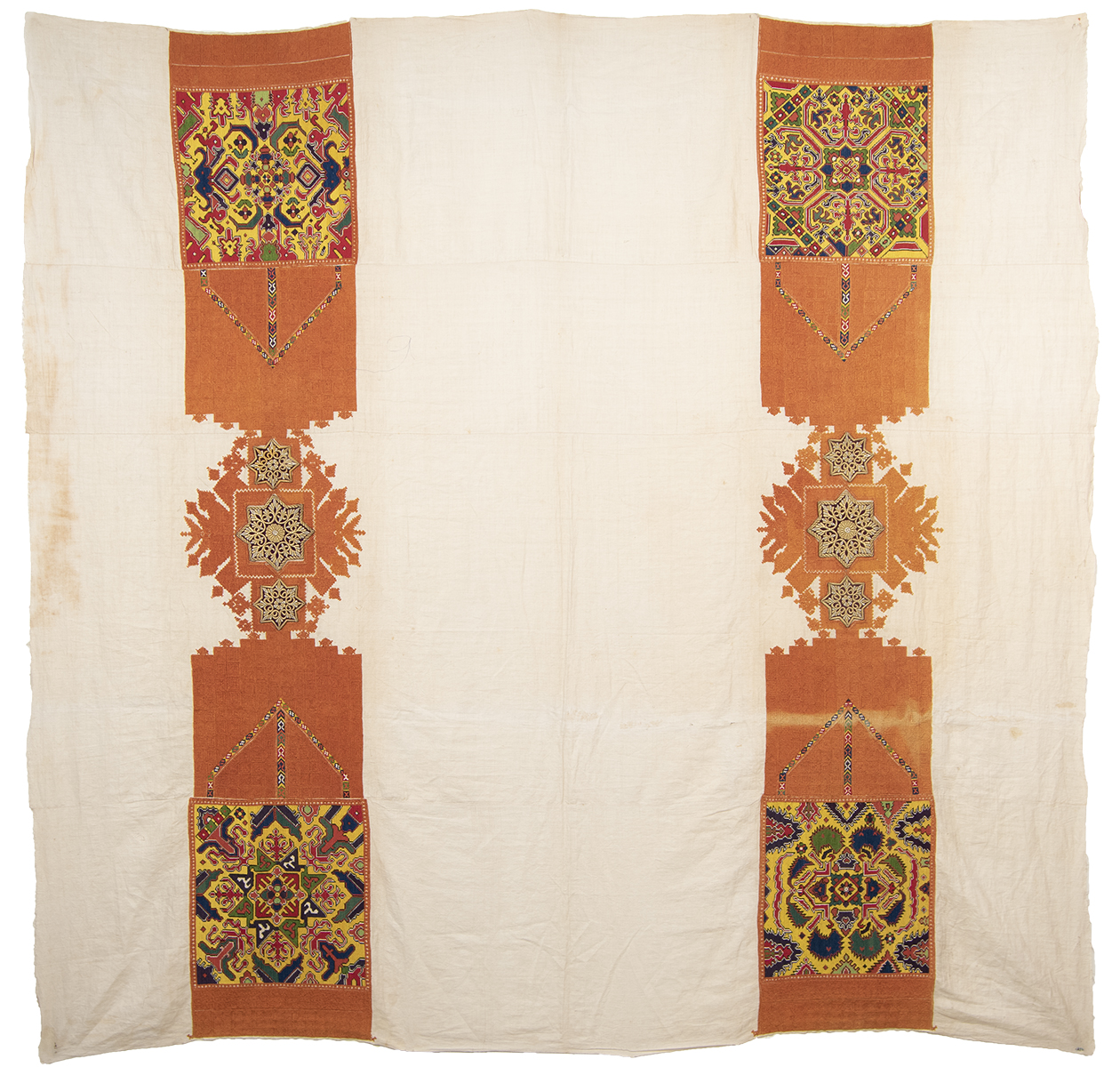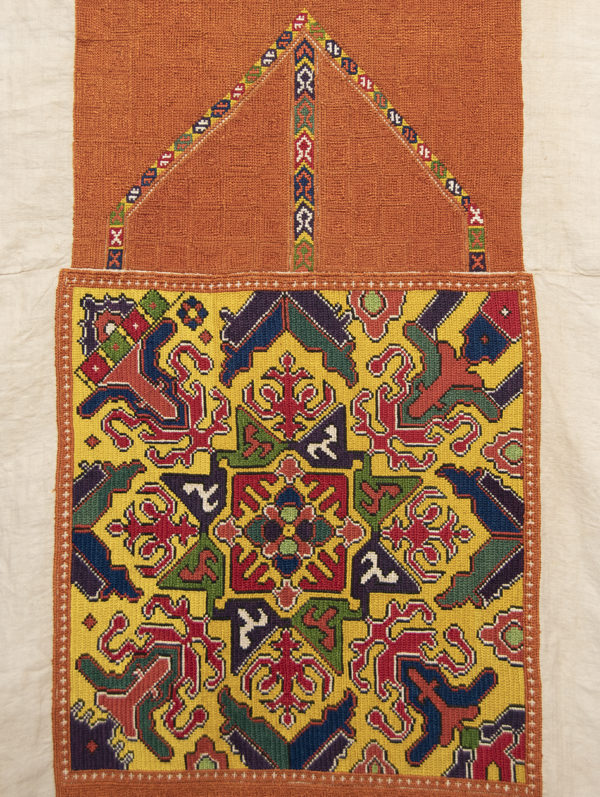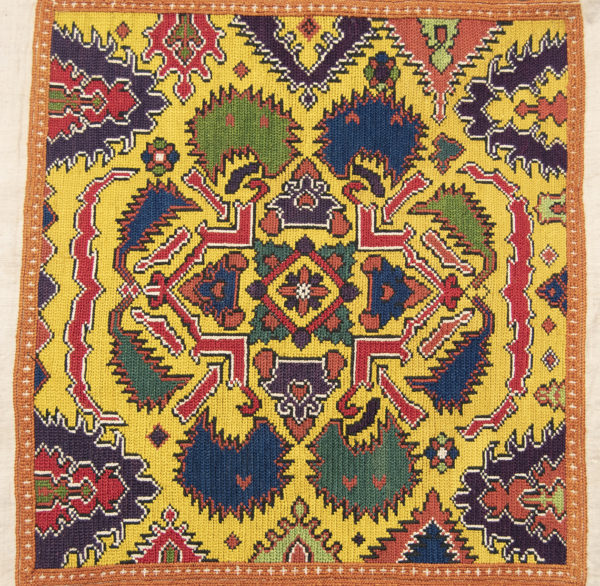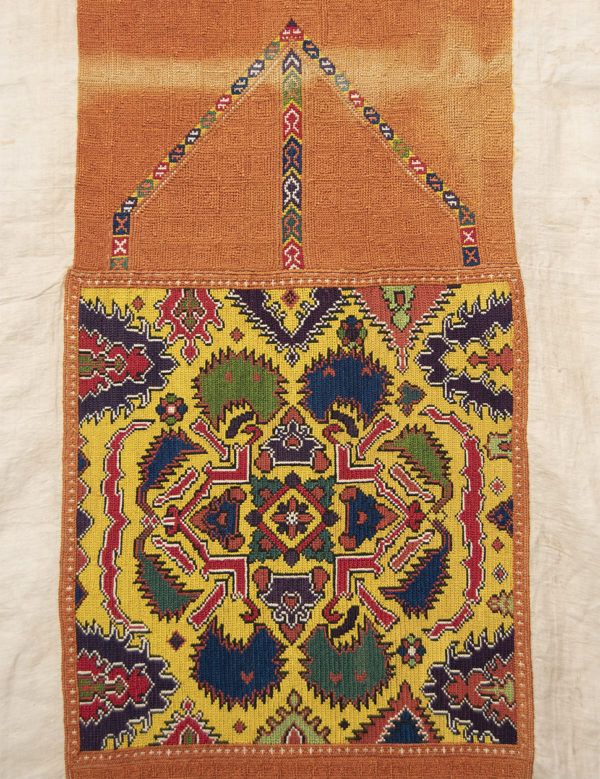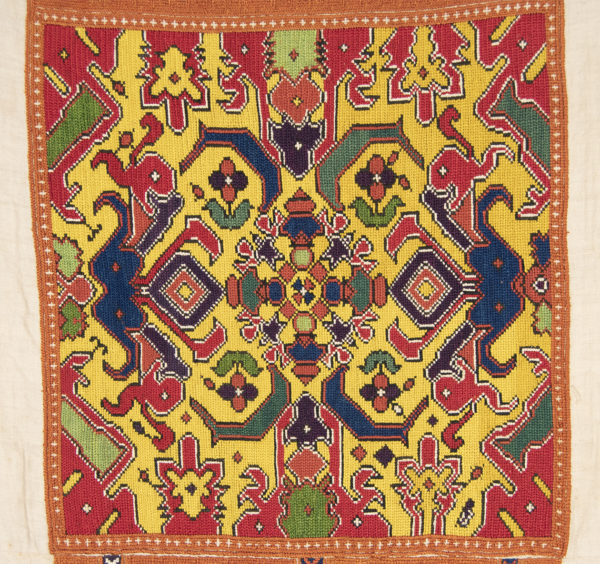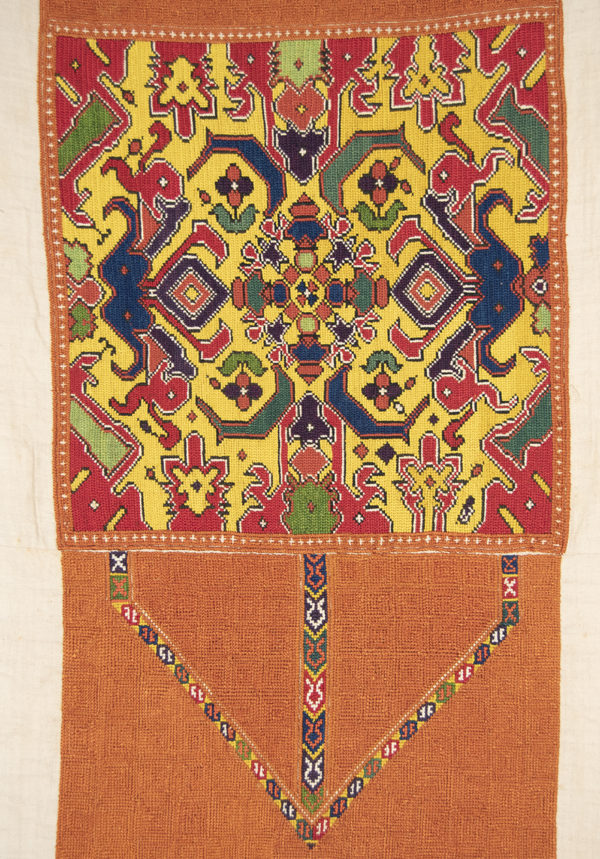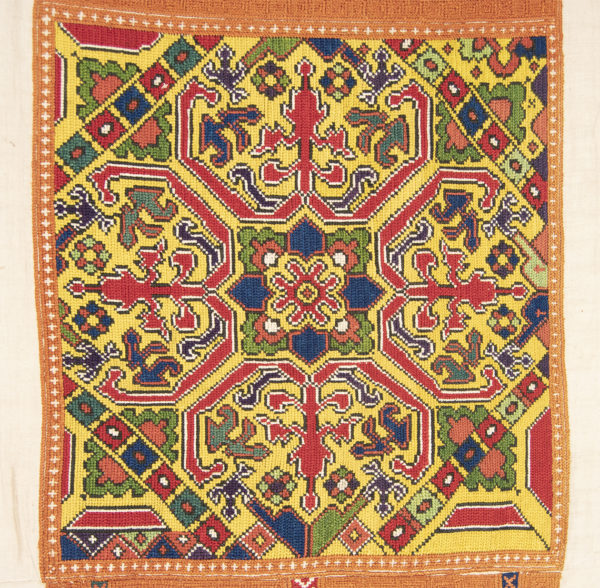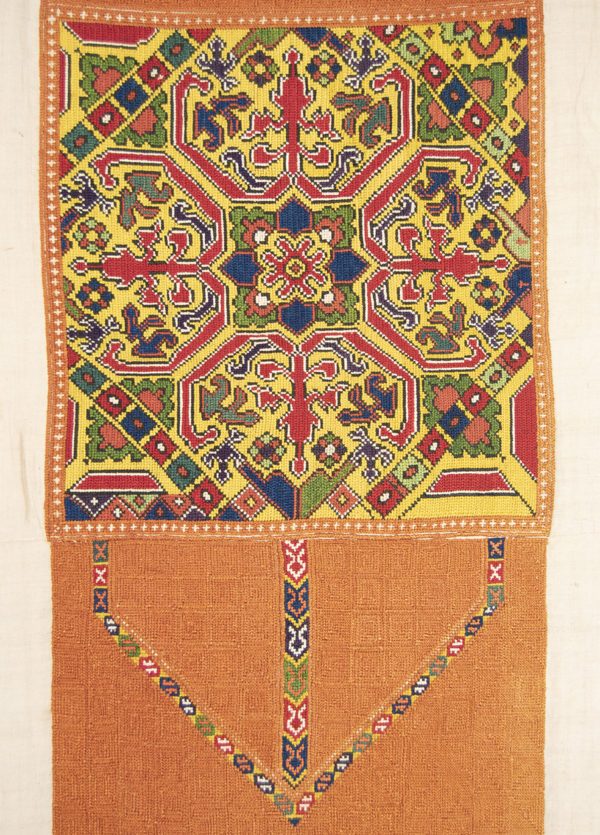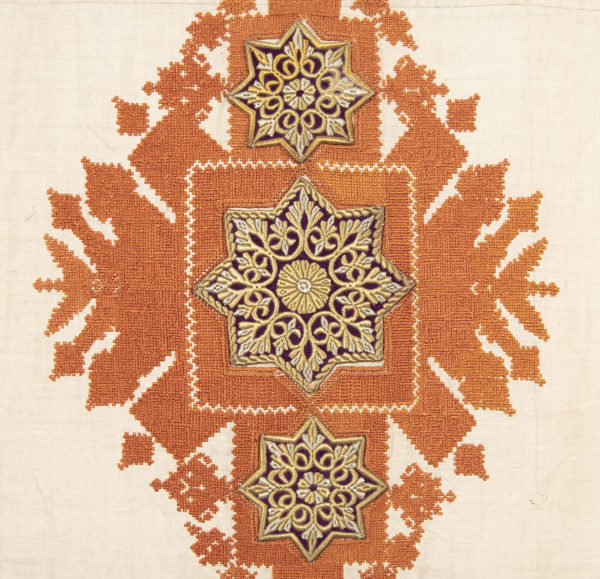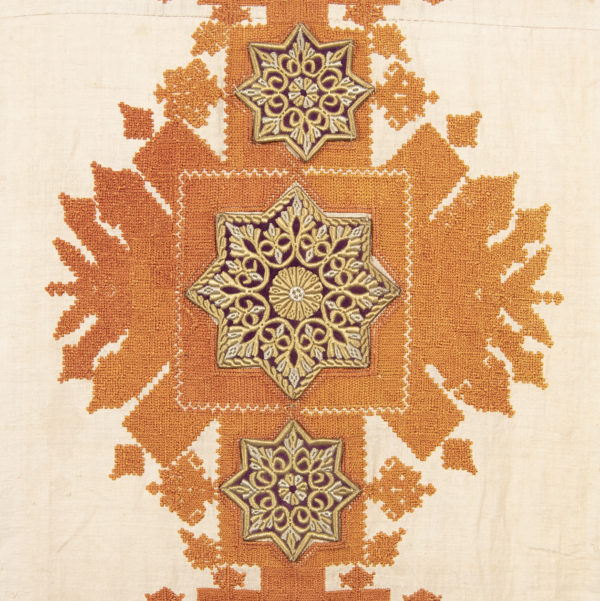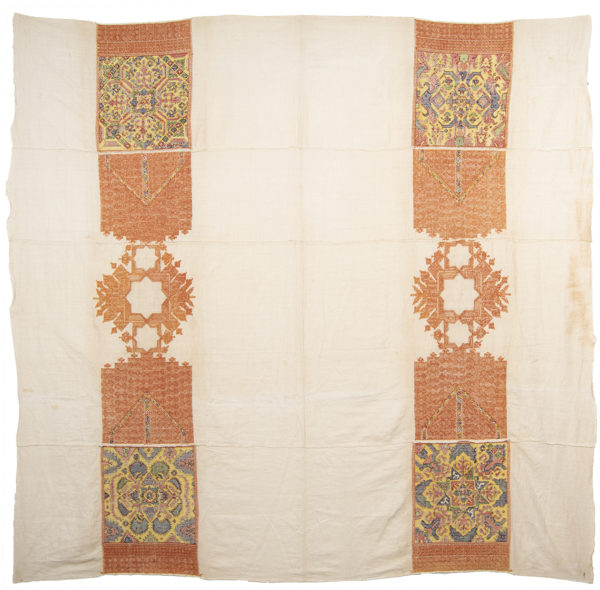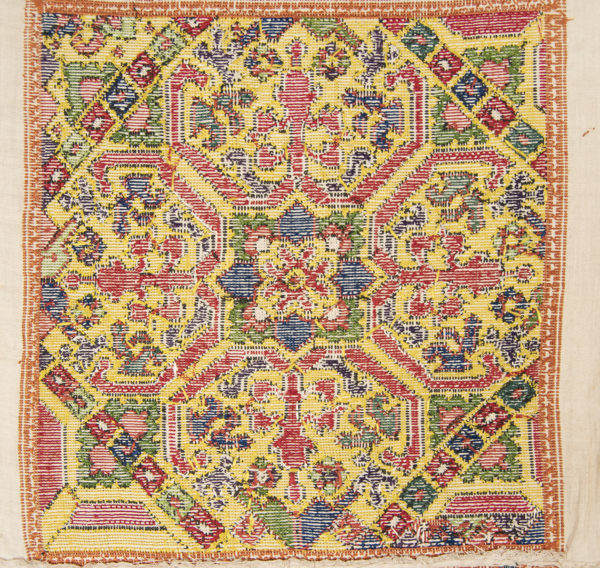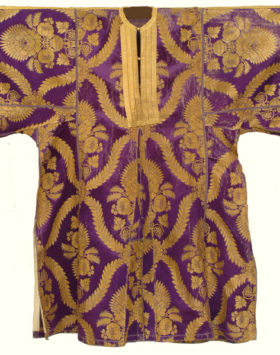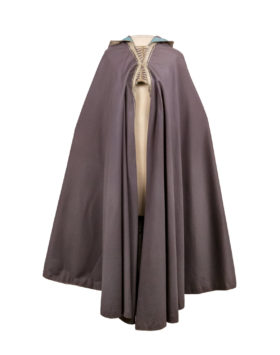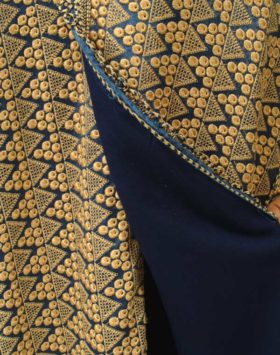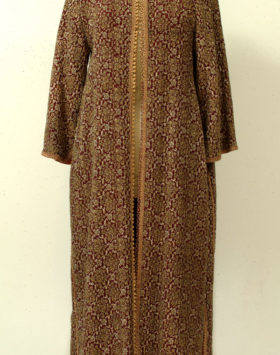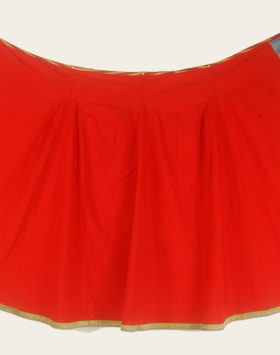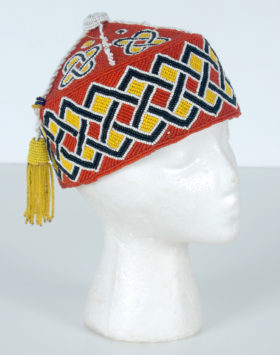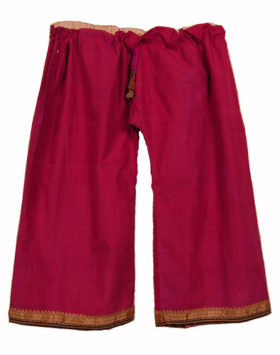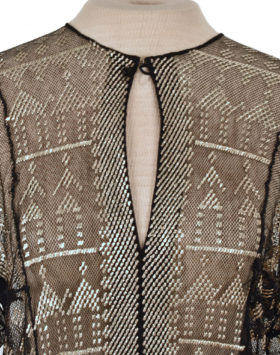Chefchaouen Embroidered Arid
Chechaouen is a small town in northern Morocco that was established in the early 16th century. Like Tetouan and Fez, it took in many Andalusian refugees, both Muslim and Jewish, and therefore, its embroideries are greatly influenced by 15th-century Hispano-Moresque textiles in both technique and design.
Chechaouen embroideries are typically in Arid form and are used as wall hangings, bed frontals, and furniture covers during festivities and ceremonial occasions. They are relatively large and have two vertical long and narrow embroidered sections divided by a large empty field. The design is organized into square panels, medallions, and cartouches. They are separated by narrow borders to resemble mosaics or tapestries. Within these shapes, there are further geometrics as well as abstracted floral elements. The composition of each panel radiates from a central cross, rosette, or as in this one, a large appliqué star flanked by two smaller ones. The handwork is done in coiled silk in running stitch, cross-stitch, and plait stitch.
As these arids were passed from generation to generation, the custom was to cut them and divide between heirs. It is very rare to find a complete uncut panel such as this one.
Circa: circa 1850
Origin: Morocco
Material: Silk embroidery on linen, appliqué stars embroidered with metallic silver thread.
Condition: Uneven fade to bottom of right panel as seen in photo. Otherwise in excellent condition.
Dimensions: 84" X 80"
Inventory number: TX4880
SOLD
